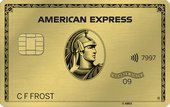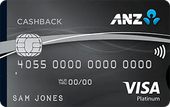What is a cashback credit card?
A cashback credit card offers a rebate on all your credit card purchases, including everyday purchases such as groceries, dining, petrol, transport and utility bills. Depending on the credit card, users can earn back a percentage of their spend, which can be higher or lower depending on the spending category. Credit cards that earn cashback allow users to save a little bit of money on every eligible purchase transaction they make.
Who are cashback credit cards suitable for?
- High spenders. If you tend to spend a lot on your credit card each month, you might as well earn cashback.
- Budget savvy shoppers. Want to stretch your dollar and save where you can? These cards help eek out more while you spend.
Who are cashback credit cards not suitable for?
- Points hackers. If you're more interested in accumulating rewards points or air miles to redeem for flights or hotel stays, a cashback card may not be a good match. That being said, if you already have a points-earning card and keep hitting its cap, you could funnel the rest of your spend through a cashback card to get value there.
- Low spenders. There may be a minimum monthly spending requirement. Failure to spend enough may mean forfeiting cashback or earning at a miserably low base rate. Considering the annual fees, this may not be very good value for money (although there are typically other perks and benefits to consider).
How cashback credit cards work
When a cardholder makes a purchase using a cashback credit card, they earn a certain percentage of that purchase amount as cashback. This cashback can then be redeemed as statement credit, deposited into a bank account, or used for other rewards, depending on the card's terms and conditions.
Transactions that don't earn cashback
You won't earn cashback, however, on any type of transaction that counts as cash or a cash equivalent. No cashback is earned, for example, on cash advances, balance transfers, interest charges and other card fees, and purchases of traveller's cheques or foreign currency banknotes.
Get cashback and Airpoints for the same purchase
Want to be rewarded twice, with both cashback and Airpoints Dollars? Simply use your cashback credit card to shop online at the Airpoints Mall. You could earn up to four Airpoints Dollars per $100 of spending, sometimes more, and every dollar you spend will also contribute to your cashback earnings.
How the cashback is paid
Cashback is paid as a credit to your card account, usually every 12 months. This means, in fact, that cardholders are given an absolutely free choice about how to spend their cashback.
Cashback vs earning air miles or reward points
If you're looking for flexibility, rewards in the form of cashback are the most flexible. The cashback to your card account means that you are getting a discount on spending where you choose to spend.
When you earn Airpoints or reward points from your card, you will probably get a better return by using the rewards for their primary purpose, which is purchasing award flights with air miles or shopping online for merchandise with reward points, so you get less choice when it comes to spending your rewards than you do with cashback. Both air miles and reward points can, of course, usually be converted into cashback, but possibly at a lower rate than if you earned the cashback directly. And having to request the conversion produces just another hassle and delay.
So if you're a frequent air traveller, an air miles card may be your best choice, while those who enjoy shopping in person or online could choose a reward points card because they're happy to shop where their card tells them to (e.g. Amazon, or the bank's online rewards store). But for the best in flexibility and instant rewards (instead of having to save up heaps of points or miles), cashback credit cards come out on top.
What to compare for cashback credit cards
Not every cashback credit card is the same. Features you'll need to compare include:
- Minimum qualifying spend. Some cashback cards require you to spend a minimum amount per year in order to qualify for the cashback program. For example, if you spend less than $5,000 in a year you might not receive any cashback at all.
- Flat rate cashback. Some cards will earn cashback at a flat percentage rate, e.g. 0.5% cashback on all spending once the minimum spend criteria has been met.
- Tiered cashback percentage. Other cards have a cashback percentage which varies according to the amount you spend in each 12 month period, starting on the anniversary of your card account approval. E.g. 0.5% cashback if you spend up to $9, 999, 1% cashback on all your purchases if you spend $10,000 or more.
- Cashback cap. Some cards have a cap on how much cashback you can earn each year (e.g. cashback earned only on the first $30,000 of spending) while others don't. Check a credit card's cashback cap, if any, before you fall for a high-rate cashback. For instance, you might be able to earn 1% cashback, but be limited to a maximum cashback of $300 per year.
- Converting rewards points to cashback. While they are not principally cashback credit cards, many rewards points cards have a a redemption option which allows you to convert points into a cashback into your card account. You might want to consider this type of card as an option if you're not sure whether you want to receive cashback or some other type of reward for your spending.
- Annual fee. Unfortunately, no annual fee and cashback don't often come together. You may have to pay an annual fee of $60-$80, possibly more. The highest fees usually confer benefits like a higher cashback percentage and/or unlimited cashback.
- A sign up bonus. Some cards may offer a temporary cashback to new customers who achieve a specified spending target within the first few months of holding the card.
- Other features. Take note of whether the cashback credit card you have your eye on comes with any complimentary extras like airport lounge access or complimentary travel insurance. Small features that you can actually make good use of can make all the difference in your decision.
How to compare the best cashback credit cards
- Understand your spending habits. Start by getting a clear understanding of how much you usually spend each month and where. Refer to your existing bank and credit card statements for this.
- Identify priority spending categories. If you spend a lot on eating out or petrol, then look for cards offering high cashback rates for those categories to optimise your rewards.
- Check the minimum spend requirement. Some cards have a minimum spend requirement, some don't. If there is one, can you comfortably meet it? If not, you could forfeit your cashback that month.
- Check for caps, tiers, and limits. Many cards have a cap, tier, or some sort of limitation on how much cashback you can get. It's usually or a period, e.g. month, quarter, or year. High spenders are impacted more.
- Check for exclusions. Certain transactions are generally not eligible for cashback, but these change over time.
Pros and cons
Pros
- Earn money on what you were going to spend anyway. Get cashback on everyday purchases, saving you money in the long run.
- Flexibility. For some, cash is king and more preferable and easier to redeem compare to points.
- Welcome bonuses. Many cards have large cash bonuses for new cardholders.
- Annual fee offsets. Cashback can be used to offset or reduce annual fees.
Cons
- Limits apply. Most cards cap how much cashback can be earned over a given period of time.
- Exclusions and restrictions. Not all transactions earn cashback, such as cash withdrawals and balance transfers.
- Higher interest rates. Cashback cards might have higher interest rates compared to more basic cards.
- Spending targets. To qualify for the welcome bonus may require hitting a specific spending target.
Alternatives to cashback credit cards
If you think that a cashback credit card is not the right choice for you, there are plenty of other options to consider:
- Rewards points credit cards. Earn points on all eligible spending and redeem them for gift cards, merchandise, travel, and – in some cases – cashback.
- Airpoints credit cards. Eligible spending earns Airpoints Dollars, which can be redeemed for free flights and upgrades, hotels and travel, rental cars and Koru Programme membership.
How to apply for a cashback credit card
The process of applying for a credit card with cashback is similar to that of applying to standard credit cards. You'll need to meet the following eligibility requirements:
- Age, and citizenship or residency. Applicants must be at least 18 years old and New Zealand citizens or permanent residents in most cases. But some types of work and student visa will make their holders eligible to apply.
- Proof of identity. For proof of identity you may be asked to provide a passport or local driver's licence.
- Income. Minimum income requirements vary between cards, rising with a higher level of benefits. To prove your income you will need to supply recent payslips and/or details of your employer.
- Credit score. Applicants will have a greater chance of approval if they can prove they're creditworthy.



